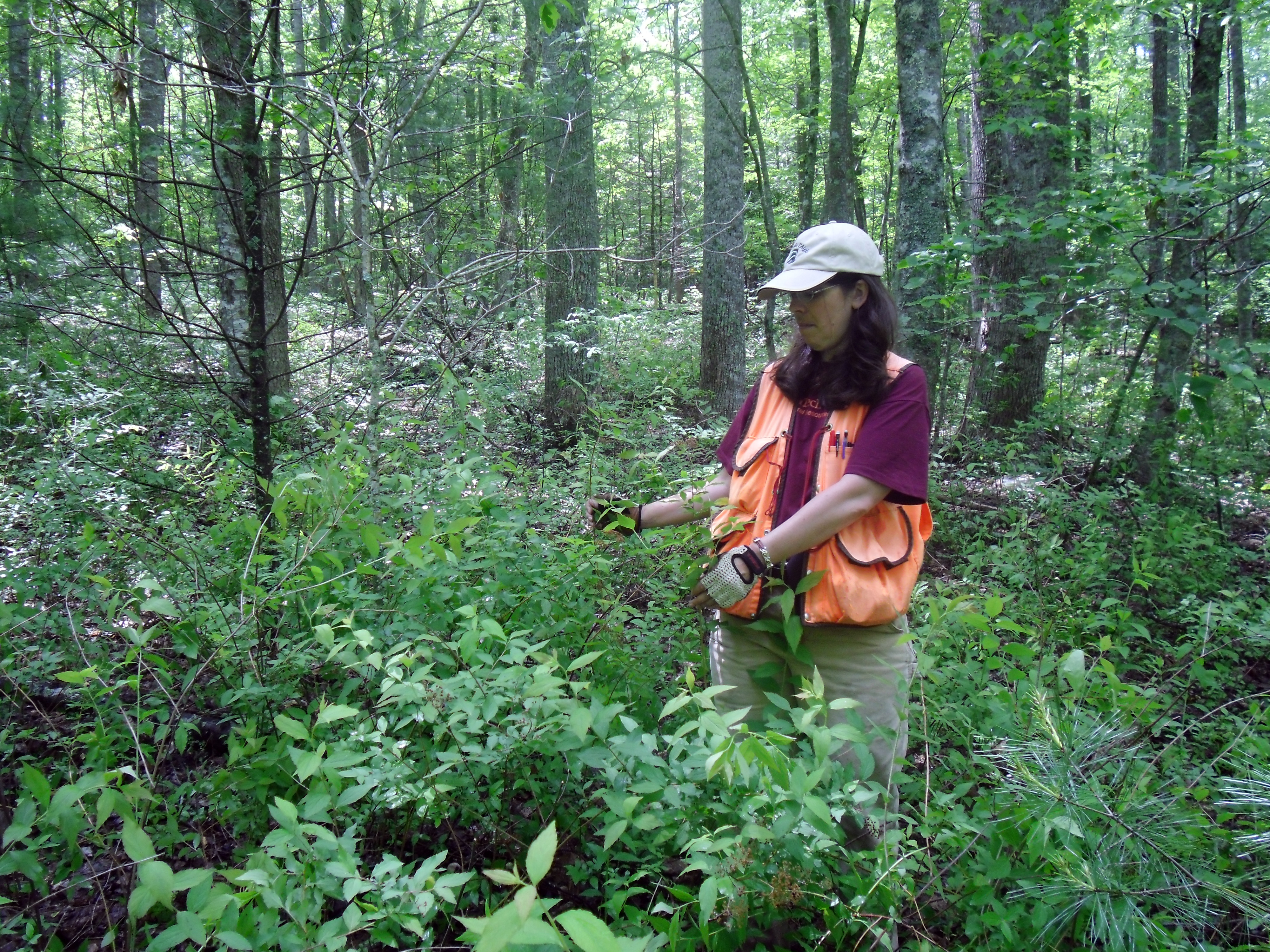Historical disturbances provide foothold for invasive plant on Buffalo Mountain

Buffalo Mountain in Floyd County, Virginia, is a distinctive knob with popular trails through grassy balds, hardwood glades, and mineral-rich rocks and seeps in a 1,136-acre natural area preserve. However, Japanese spiraea, a robust member of the rose family non-native to the area, may pose a threat to the preserve’s biodiversity.
Virginia Tech forestry and plant science experts have surveyed Japanese spiraea populations at the preserve, identified environmental conditions favoring growth of the unwelcome shrub, and provided recommendations for management.
Carolyn Copenheaver, associate professor of forest ecology in the College of Natural Resources and Environment, whose research focus is disturbance ecology and land use history, has worked with the Natural Heritage Program on Buffalo Mountain for over a decade.
When Claiborne Woodall, the preserve steward, asked her to investigate the Japanese spiraea invasion, “It was an opportunity to combine Virginia Tech’s research and outreach missions,” Copenheaver said.
Copenheaver enlisted Jeff Feldhaus of Omaha, Nebraska, then a master's degree student who is now working on his doctorate in the College of Natural Resources and Environment, and Assistant Professor Jacob Barney, an invasive plant expert in the College of Agriculture and Life Sciences, to investigate the extent to which Japanese spiraea has already become established at Buffalo Mountain.
Their research was published in Natural Areas Journal.
The researchers walked the preserve and sampled Japanese spiraea populations as well as the areas that surrounded the populations and areas at high risk of invasion, such as forest edges, roads, right-of-way cuts, and waterways. They ascertained the height at which sunlight was intercepted and recorded canopy cover, soil moisture, soil depth, and the mineral make-up of the soil.
Each population of Japanese spiraea was measured and recorded with a GPS. Population sizes ranged from 200 square feet to more than a quarter acre.
Populations of Japanese spiraea were found primarily in power line corridors, abandoned roads, and streambeds; most were concentrated in the southwestern corner of the preserve, south of State Route 758.
“That area is an intersection of three conditions that increase the likelihood of Japanese spiraea establishment: a creek, a road, and an adjacent pasture,” said Copenheaver. “In other words, the area had more sunlight and less tree cover than areas free of the shrub.”
Soil moisture and depth to bedrock were not factors, but areas of invasion did have higher calcium from mineral seeps, the researchers reported.
By monopolizing available light, Japanese spiraea outcompetes native plant species and can prevent the regeneration of native plants. But four native woody species — rhododendron, eastern redbud, witch hazel, and serviceberry — do have a height advantage if they can get established first, Copenheaver said.
The research team recommends a long-term monitoring plan that includes a spatial database, repeated sampling, alerting land managers of where and when control efforts should be directed, and protection of threatened areas, such as wet areas at lower elevations.
They also recommend preventing human actions that would result in disturbing the canopy near these wet areas and continued monitoring of areas of high risk for future establishment, such as recently disturbed areas and within the grassy balds and eastern redcedar glades.
“At Buffalo Mountain, Japanese spiraea is currently limited to areas that have been disturbed in the past,” said Copenheaver. “Therefore, to prevent further spread of this non-native plant within this natural area, future disturbance should be minimized.”






